DAVE: Hey Chris, the other day we were comparing photos we’ve taken that reveal a shared obsession. Are we weird for being drawn to pictures of holes dug into the ground? You might call it excavation porn, and I have a fair amount of it on my phone. The fantastic picture you took, shown at the top of this story, of construction around the Mowat House in Burnaby’s Metrotown really seems to fit the genre.
The corollary, I guess, are photos of knocked down homes, lots piled with leftover debris or scraped clean. Demolition porn? Anyway I figured I’d send you a few of mine if you show me some of yours. How about we form a two-person support group and discuss why we take these photos and what they say to us?
CHRIS: Don’t be shy if you’re caught with this content on your phone, Dave! I’ve always stopped to snap shots of urban change, though I’ve never stopped to think about categorizing them. I think you’re right — looking at different forms of upheaval produces different reactions. Excavation porn is for people who like to admire and ponder holes, heaps and holes and heaps together. This category seems to put the dominance of an environment on display and provoke shock and awe about what’s to come. Plus, the height of skyscrapers is commonly fetishized in cities, so why not depth? After all, it’s a very expensive part of the development process. I’ve been told that underground parking spots cost upwards of $50,000 per spot for developers. Anyway, let’s see one of your shots!
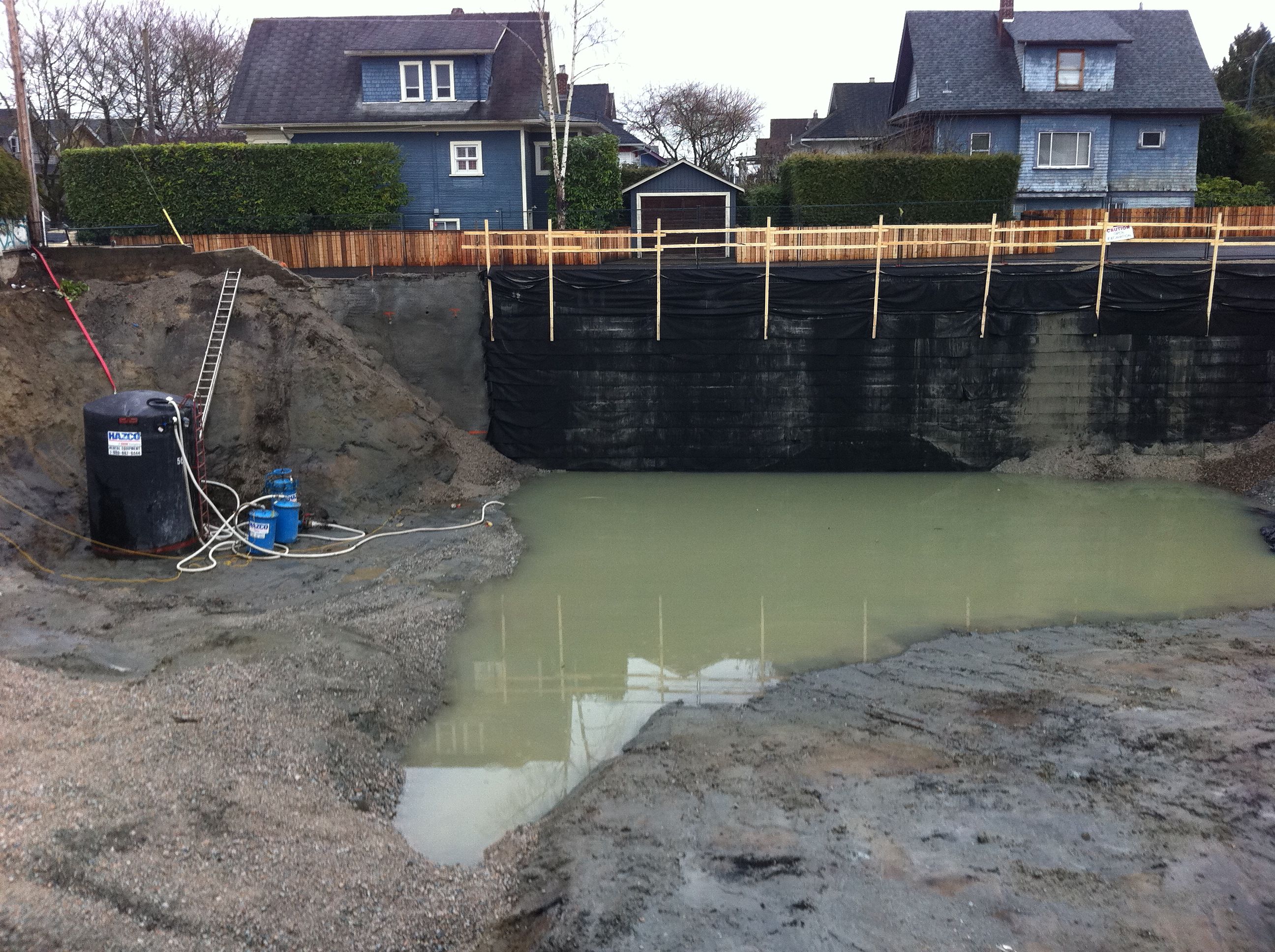
DAVE: Here’s one of a pit dug about a block from my home about seven years ago at 24th and Main, which echoes yours above in some ways. I think your point about the “shock and awe about what’s to come” is really apt. Another way to say it might be that these photos record violent episodes. The violence done to a community’s textured built fabric. Where there was a gas station where I could get a battery recharged on a Saturday afternoon just by walking it over to my pal the gruff mechanic who was in constant motion in his greasy little world, now there is a watery chasm, houses peering over the edge with trepidation.
Fans of “disruption” might thrill to such images, while the conservation minded may cringe. We are photographing wounds, leaving open the question: Will they “heal” or just scar over?
CHRIS: Ah, I know that corner. I’m sad that the mixed-used development has a Sleep Country facing an important intersection like Main and King Edward. Not really an interesting addition compared to what’s on the south side: the funky Trendybucks and the classic Helen’s Grill. I could go on about monotonous new businesses, but back to the topic…
We seem to be chronicling growing pains. I don’t think urban development can happen without violence. In the built environment, you have to destroy to create. But these photographs raise good questions for the city. What’s being lost? What’s being gained, and for whom? Here’s another one I took near Burnaby’s Metrotown, at the northwest corner of Imperial and Marlborough, that tries to ask those questions.
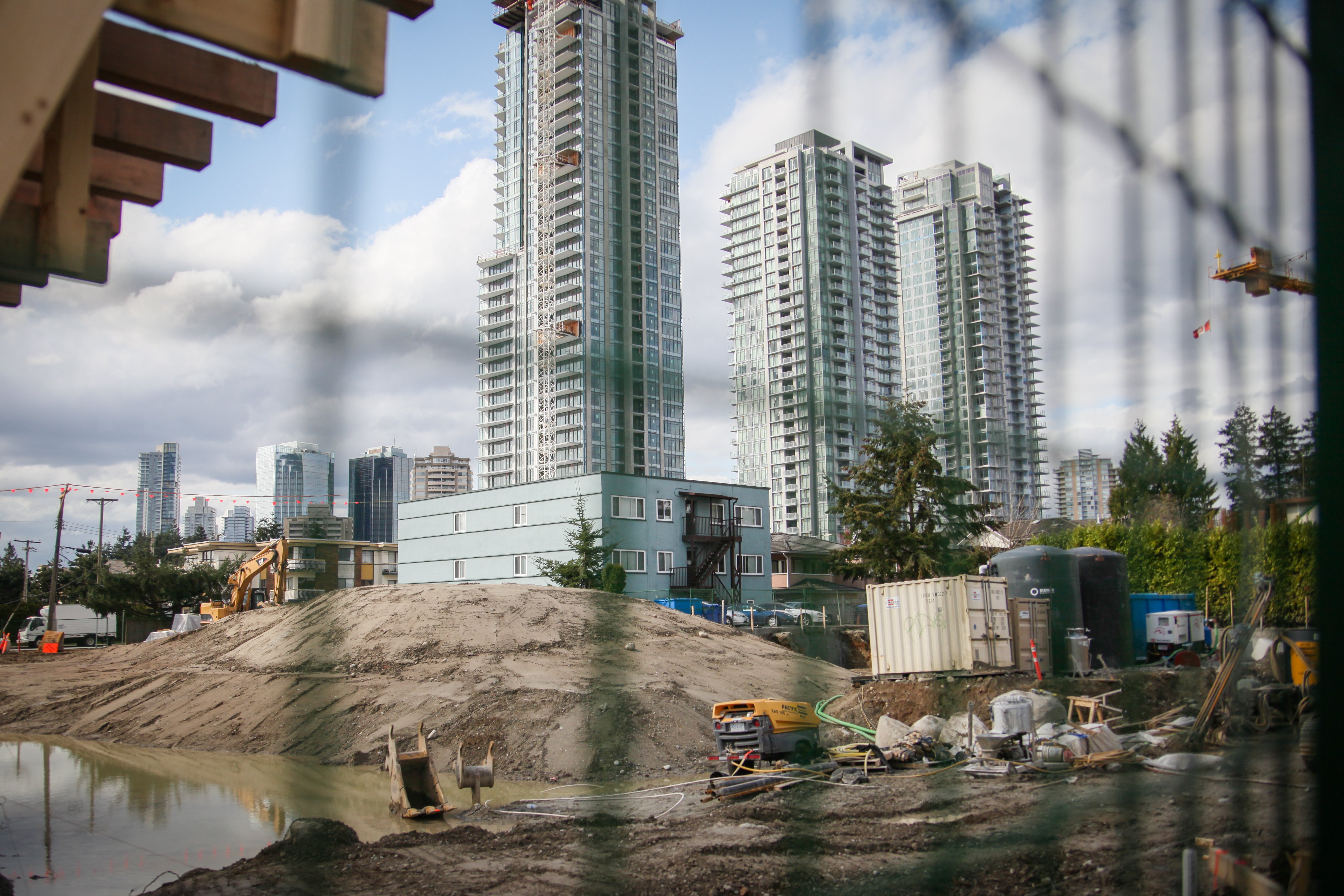
Photographing the change here is something of a mild obsession for me because of how dramatic it is. A glance at any part of this neighbourhood will tell you a clear story: old rental walk-ups are being replaced by condo high-rises in a popular area. You can see both in the image. Fences are irritating for excavation pornographers such as ourselves, but in this case, perhaps it helps the viewer empathize with renters who are shut out from shiny new developments?
DAVE: There’s something primordial about that image, Chris, the towers rising up out of the muck. A dirty picture indeed. “What is being lost? What is being gained and for whom?” That certainly was on my mind when The Tyee was located in Chinatown at the corner of Main and East Georgia, across from this scene, snapped from a parkade rooftop.
What had been lost was a boxy mini-mall of, I am guessing, ‘80s vintage, which itself probably erased some historic relic of where Hogan’s Alley and Chinatown meet. Still, I liked grabbing a bowl of pho at the Vietnamese restaurant that, being on the second floor, never had enough customers to make me wait. By the time I took this in 2014 the corner had been sacrificed, in the Chinatown rezoning compromise, to one of the tallest towers allowed. I love the massive graffiti and wonder how the artists put it there. Then did the builders erase it as the tower rose, or is it still there, jeering?
CHRIS:“DEMOS YABOY,” indeed. Great vista. It also shows that not only do you have to be at the right place at the right time to take these, but you also have to find the right angle. The best excavation porn reminds me of those large picture books I liked as a kid with cross-sections of things like ships and planets. If the excavation pornographer is lucky, a hole may daylight layers of history.
Memories of the city, like yours, are why capturing these images are so important. It turns out that Google Street View does a good job of this too. Because their cars have been zipping around photographing our cities in 360 degrees every year or so, you can now scrub through the same location over a 12-year span. I can see the little mall where you ate pho by clicking here before that dense mutha claimed the block. I almost forgot what that mall looked like — all the more reason for us to keep shooting.
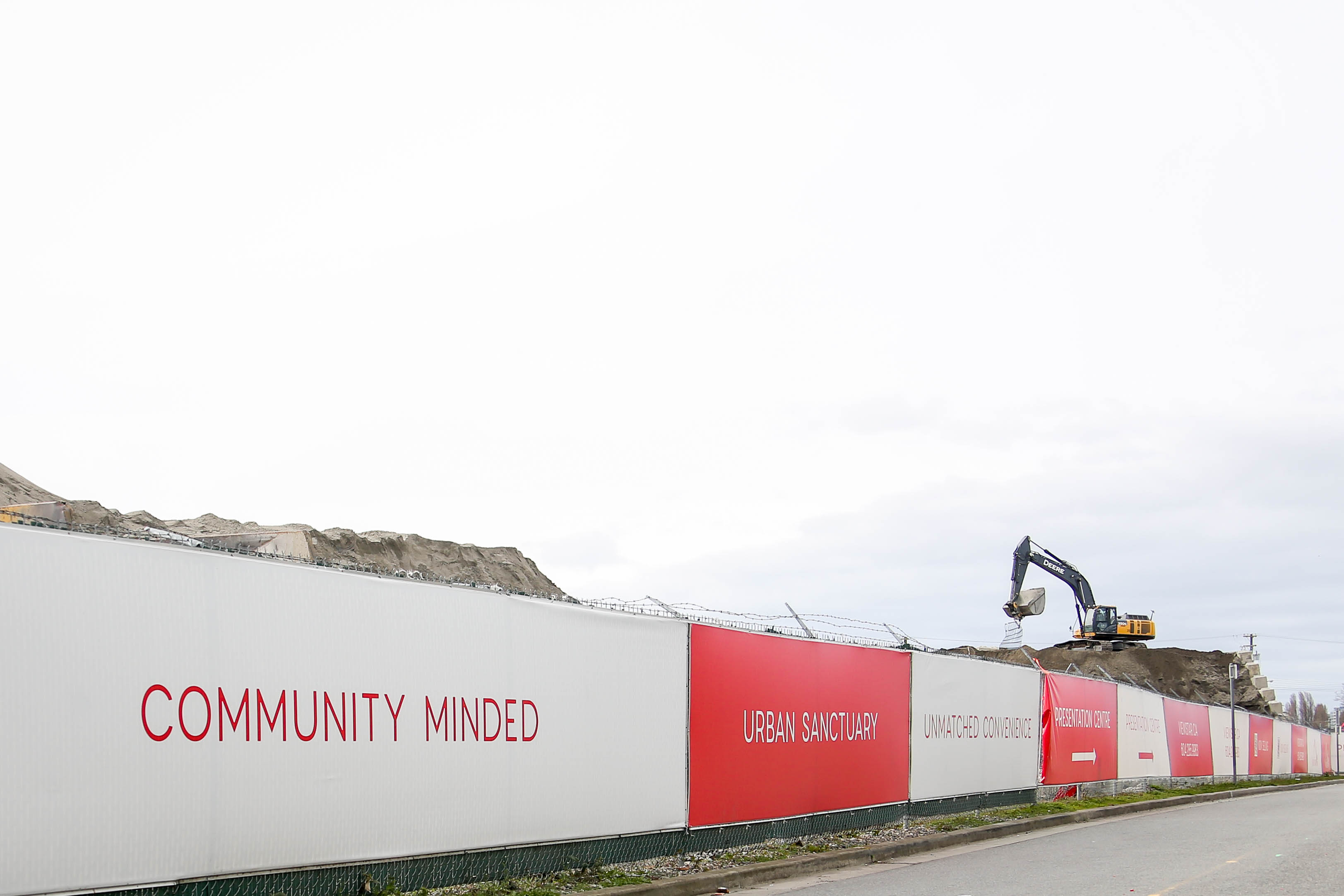
This shot of the ViewStar development in Richmond on No. 3 by Bridgeport has less action, but shows the utopian promises you often see in the packaging of developments. Ignore this dirt for now! A future is coming, where every home is part of an “extraordinary” “collection of residences,” where your building is a “community minded” “urban sanctuary,” where you will be living a “rich lifestyle… second to none.”
DAVE: Yes, we do live in an irony-rich landscape, and I love how alert your eye is to that without rubbing our noses in it. There is also a tradition, dating back to Romantic era painters and then earliest photographers, of making images of ruins, the better to remind us that all the best laid plans of empires (and humble house dwellers) are no match for time’s steady march. I’m gonna share a bit of demolition porn here because in an ironic way it evokes (to me at least) the poet Shelley’s “Ozymandias” writ miniature.
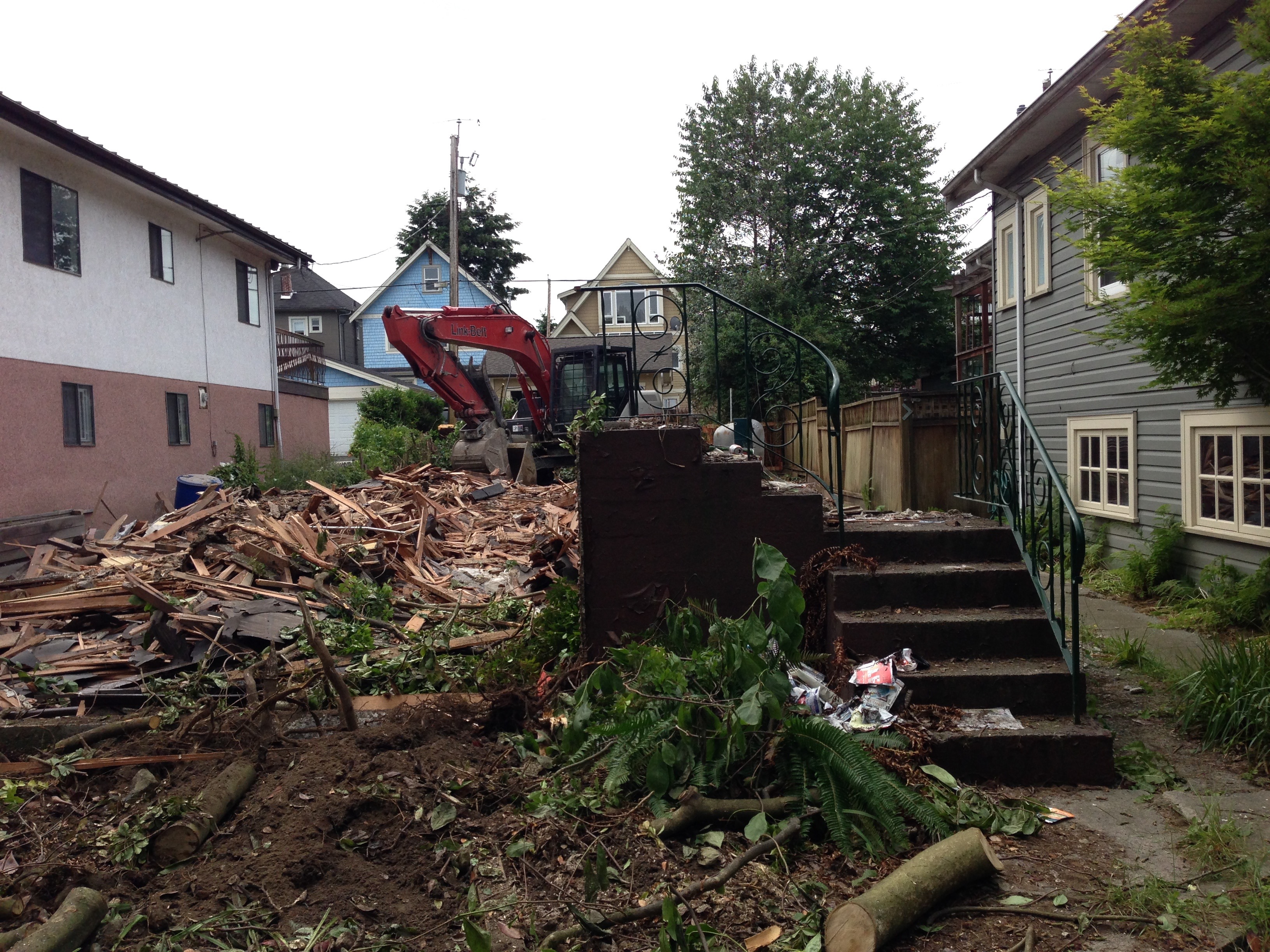
Instead of “Two vast and trunkless legs of stone” left standing in the desert, you get... a few concrete steps with a wrought iron railing leading nowhere. Humans! Your grand ambitions are folly! Ye shall downsize and move to Powell River!
CHRIS: There’s a lot to see in that great image, Dave: the Bobcat, the stairs, the mess of flyers, the Vancouver Special to the left, the turn-of-the-century houses in the back… It captures the passage of time on this residential block. And nice “Ozymandias” reference. “Nothing beside remains round the decay of that humble Bungalow.” You’re giving me flashbacks to English class with Mrs. Panesar.
While Shelley talks about fleeting empires, I think something more Darwinian is going on in excavation porn. In our city’s survival of the fittest, the alpha is always what capital deems to be the “highest and best use”. But that raises the question of whether we should trust the tide of capital to drive our cities.
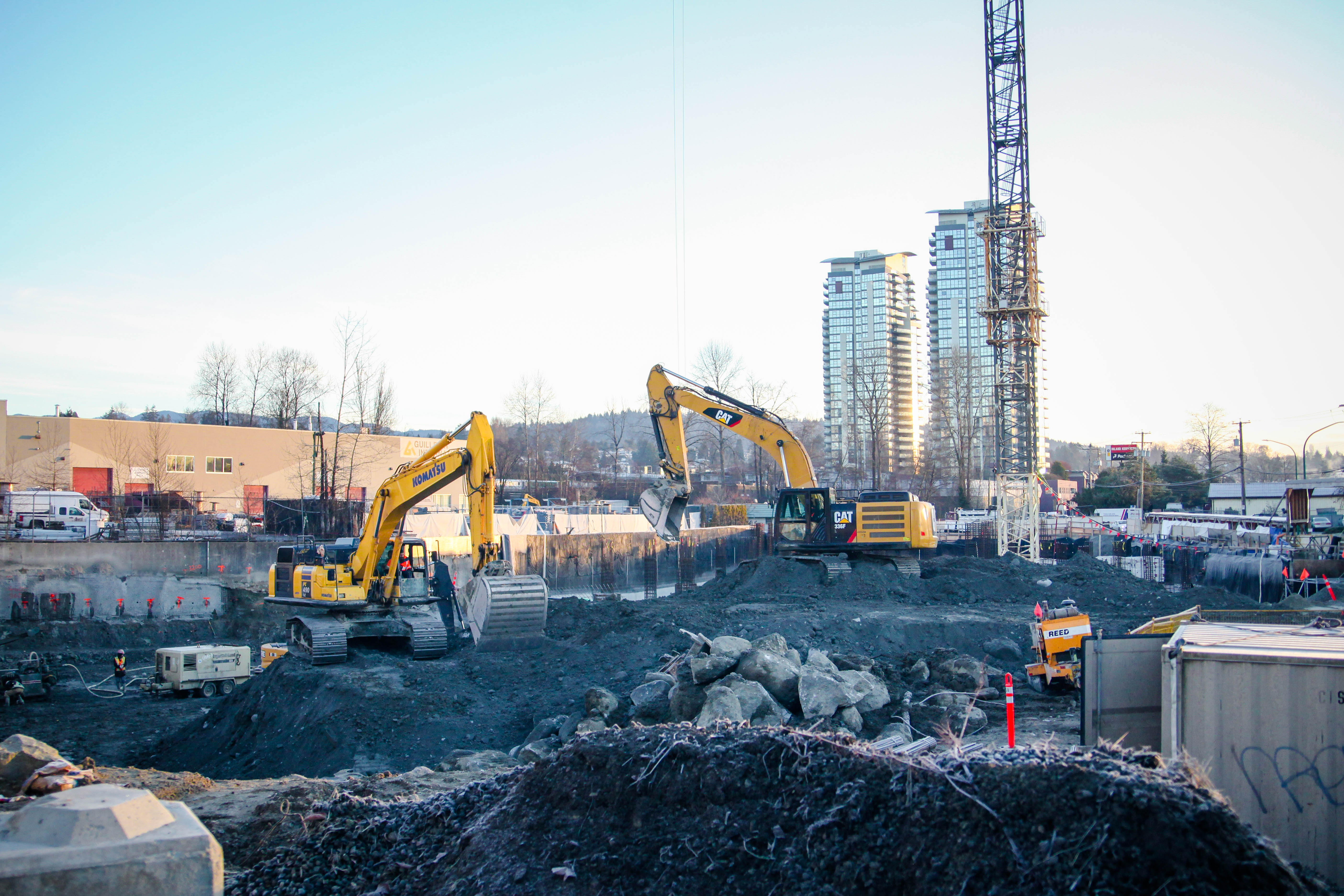
Here’s one from the intersection of Goring and Douglas in Burnaby, in the industrial zones south of Lougheed Highway. Here, properties that were once autoshops or sold industrial equipment are disappearing; even Dairyland’s former milk plant, near the site of this photo, was recently sold. The alpha species moving into these parts is the Burnaby tower-and-townhouse combo of condos.
DAVE: Eeeek! The alpha species emerges from the depths, like one of those old sci-fi movies where they tried to tunnel to the centre of the Earth and unleashed dormant monsters. In that spirit, here’s my parting shot, so to speak, taken in November in a fast changing area of North Vancouver. Hey, it’s got that old sci-fi horror movie sky!
CHRIS: Condozilla sleeps no more.
Here’s my parting shot, for excavation porn addicts who are into heaps more than holes.
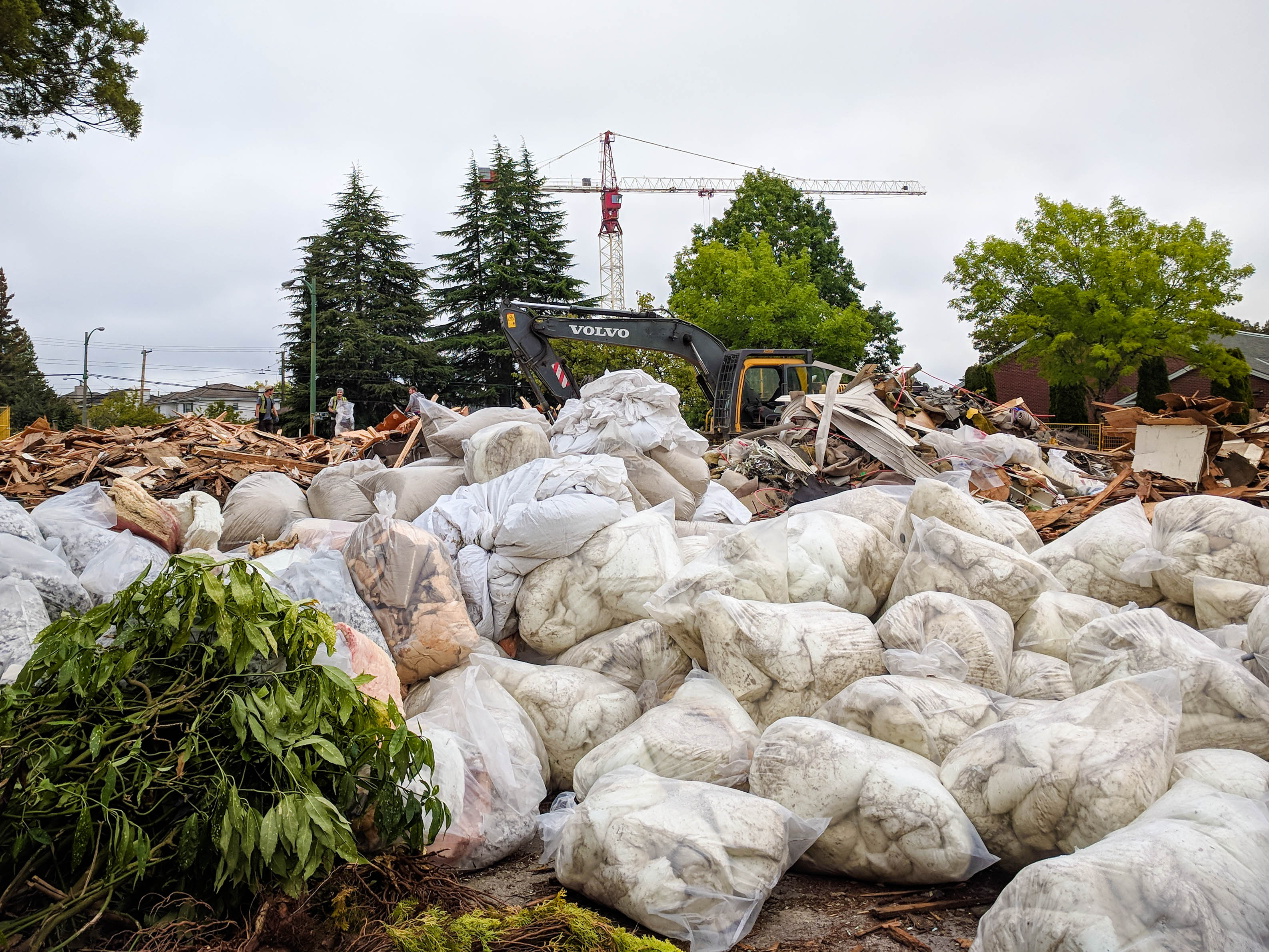
We should do this again, Dave. It’s nice to know that I’m not weird. Perhaps a look at demolition porn?
DAVE: Definitely. Meanwhile, let’s invite readers to send us their best photos of landscapes torn up, buildings torn down, images portending promise or apocalypse, depending on how you feel about it all (email it with a caption to: info (at) thetyee (dot) ca). Also a shout out to Caroline Adderson, an author and editor of Vancouver Vanishes whose Facebook page of the same name has some pretty dramatic demo porn. Thanks for sharing, Chris! ![]()
Read more: Photo Essays, Urban Planning + Architecture


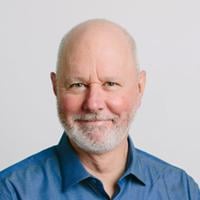

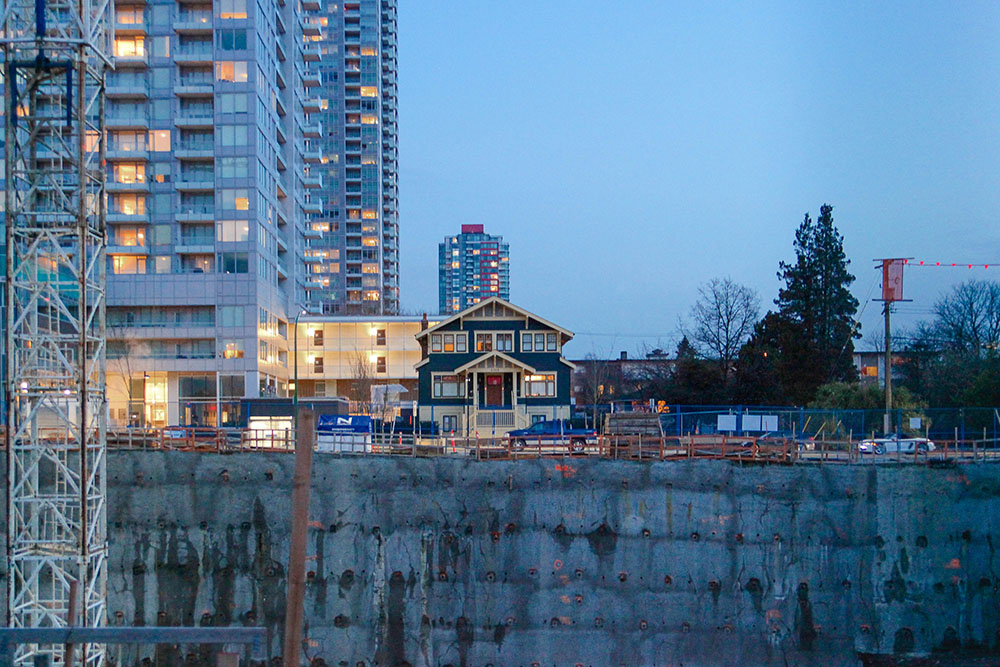












Tyee Commenting Guidelines
Comments that violate guidelines risk being deleted, and violations may result in a temporary or permanent user ban. Maintain the spirit of good conversation to stay in the discussion.
*Please note The Tyee is not a forum for spreading misinformation about COVID-19, denying its existence or minimizing its risk to public health.
Do:
Do not: